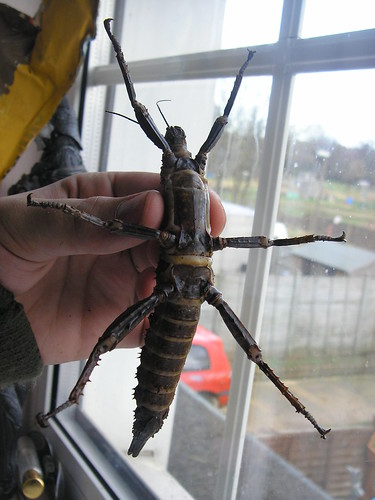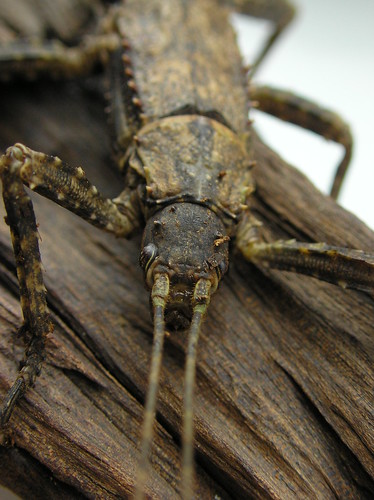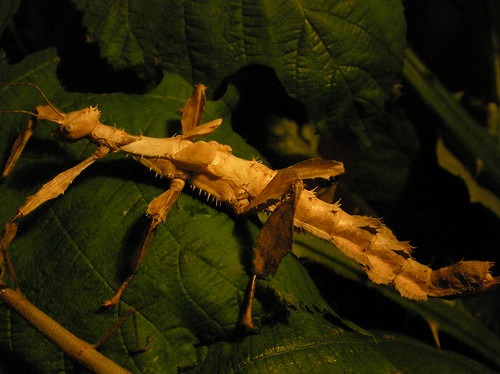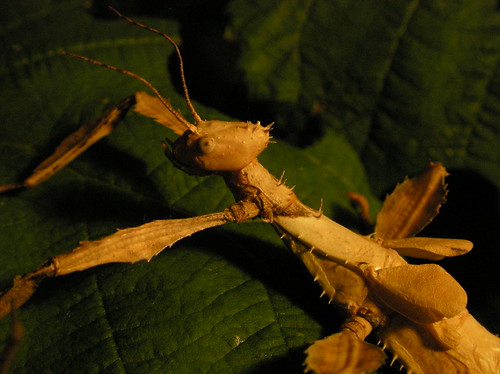Their not quite boring at all, not even one bit, they look just as good as mantids, if you think their boring just cause of their diet then the only reason you have an interest in mantids is cause you find pleasure in having them kill things :angry:
I keep both mantids and phasmids.
Giant spiny stick insect is like saying, green mantis, it could descrive hundreds of species, do you know the actual scientific name of these giant spiny`s?
If you cant then describe them the best you can.
Eurycantha calcarata are generally refered to as Giant spiny`s, but then again so are
Extatosoma tiaratum.
Heres a couple of pics of both.
Eurycantha calcarata
Eurycantha love a humid set up, they need deep substrate, something like cocofibre, around 2 inches deep for the females to lay her ova in. They can be aggressive, defending them selves with the thorns on their hind legs, the males have a very large hook like thorn. The males are most agressive, even mroe so when there are more males to females, so generally have a one male to 2 female ratio. They feed happily on bramble and i think they can take guarva. Eggs take about 6 or so months i think. I house mine in a large (soon to be replaced by a bigger) clear plastic box with lid. The only ventilation they get is through the small space between the lid. I say they love humidity but ive also had them doing fine in dryer habitats. I also place several bits of bark for the nymphs and adults to hide under.
Extatosoma tiaratum
Extatosoma prefer dryer conditions, and should be fed on eucalyptus but they can take bramble, bramble being the equivilent to junk food for this species. Spray around once a week, when i had them they were on sand. They can use their back legs just like eurycantha but they VERY rarely do and it can cause no damage what so ever. Ova take generally 9 months to hatch from a sexual stock and 12 months from a parthenogenetic one i think. They prefer airy housing with plenty of ventilation.








